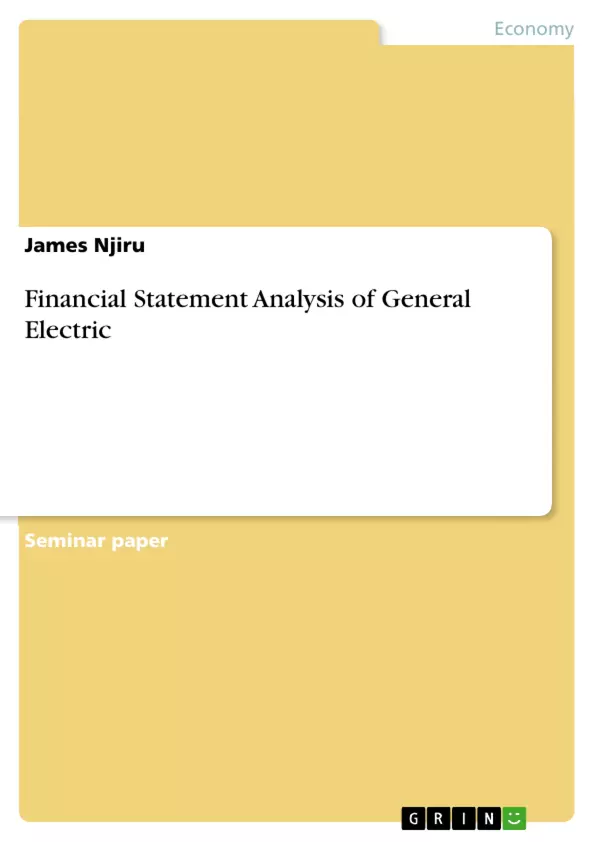This paper critically comments on the financial strenghts and weakness of General Electric. It provides definitions of key terms and an industry / competitor analysis as well as a ratio analysis.
General Electric Company (GE) operates as a technology, media, and financial services company worldwide. It was founded in 1892 and is based in Fairfield, Connecticut. The company is at the center of the Energy Industry with infrastructure ranging from gas, steam all the way to renewable energy solutions. Some of its major products include oil and gas and reliable power, air cooled heat exchangers among others services such as management of energy and assisting clients in the production of efficient energy.
An analysis of a financial statement is a report that is prepared by a company and issued to investors and creditors. It helps give a clear picture of the company's performance and its health in terms of its financial stand. An investor can, therefore, evaluate the present and past performance of the organization and see the direction in which the company is moving before making a decision.
Inhaltsverzeichnis (Table of Contents)
- Introduction
- Company Overview
- Horizontal Analysis
- Income statement
- Balance Sheet
- Ratio Analysis
- Industry/Competitor Analysis
- Financial recommendation, Strengths & Weaknesses of General Electric
- Financial strengths
- Financial Weaknesses
Zielsetzung und Themenschwerpunkte (Objectives and Key Themes)
This financial statement analysis aims to provide a comprehensive evaluation of General Electric (GE) company's financial performance and health. The analysis utilizes various financial tools such as horizontal analysis, ratio analysis, and competitor analysis to assess the company's strengths and weaknesses. The study aims to shed light on GE's financial position, its competitive landscape, and potential areas for improvement.
- Financial Performance and Health of General Electric
- Comparison of General Electric with its Industry Competitors
- Analysis of General Electric's Financial Strengths and Weaknesses
- Evaluation of General Electric's Competitive Advantages
- Assessment of the Impact of Financial Trends on General Electric's Future
Zusammenfassung der Kapitel (Chapter Summaries)
The analysis begins with an introduction to the financial statement analysis and its importance for investors and creditors. The company overview chapter provides background information on General Electric, including its operations, history, and key competitors.
The Horizontal Analysis chapter explores the trends in General Electric's financial statements by comparing data over multiple years. This section focuses on key financial metrics like revenue, operating income, and total costs, highlighting any significant trends or fluctuations.
Ratio Analysis delves into the liquidity, profitability, solvency, and market ratios of General Electric, providing insights into the company's financial health. The analysis also compares GE's ratios to industry benchmarks and competitor data to assess its relative standing.
Industry/Competitor Analysis delves into the competitive landscape of General Electric, examining the company's market position relative to key competitors such as Siemens, Philips, and Citigroup. This chapter explores GE's strengths and weaknesses in terms of market capitalization, workforce size, and key financial metrics.
Schlüsselwörter (Keywords)
The main keywords and focus topics of this financial statement analysis include General Electric, financial analysis, horizontal analysis, ratio analysis, industry/competitor analysis, financial strengths, financial weaknesses, liquidity, profitability, solvency, market capitalization, competitive advantages, financial performance, and financial health. This analysis delves into the company's financial position, competitive landscape, and potential areas for improvement.
- Citation du texte
- James Njiru (Auteur), 2017, Financial Statement Analysis of General Electric, Munich, GRIN Verlag, https://www.grin.com/document/377234



